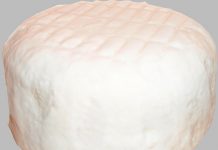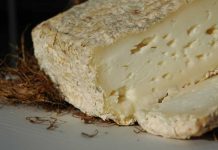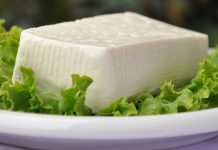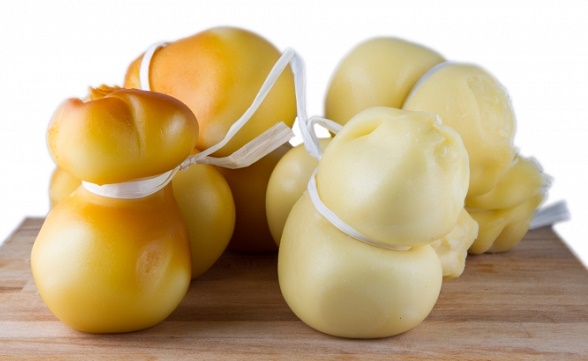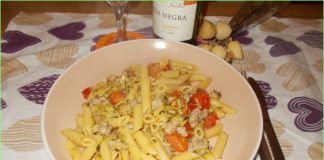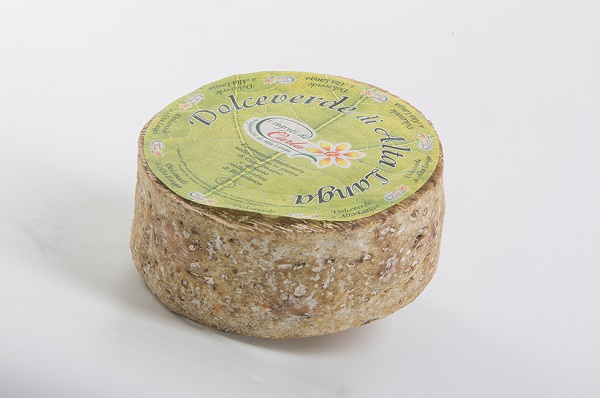
Introduction
The Dolce verde (Sweet Green in English) is a kind of Gorgonzola, a blue cheese that is produced in Italy, starting from whole cow’s milk processing. It is a cheese that has the DOP, a native of the province of Milan, made in the cities of Milan, Como, Novara and Pavia. In the last century the city of Pavia has become the largest producer of the Dolce Verde, with a percentage of 70% of the entire production.
The period when this cheese as been made the first time is still very uncertain, and the earliest traces of Dolce Verde come from the ninth century, especially in the city of Gorgonzola, near to Milan, from which was later named. The production of this cheese grew enormously in the nineteenth century, and was also exported, as well as in the various Italian regions, also in England.
In 1996, the Dolce Verde Gorgonzola was recognized by the European Community, provided and included in the PDO food.
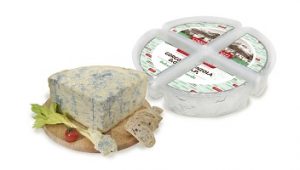
Each wheel weighs about 12 kilograms and reports on both sides the mark of origin and provenance, wrapped in aluminum foil to strictly carry the distinctive symbol indicating the protected designation “Gorgonzola“. In the market you can also find even the Dolce Verde Gorgonzola DeCo, namely the Municipal Designation of Origin, which serves to give the possibility to various municipalities to be able to produce and then sell even outside the municipalities PDO.
Production
The Dolce Verde Gorgonzola is produced exclusively in Italy, in the region of Lombardy and Piedmont, to be precise in the provinces that include: Bergamo, Brescia, Biella, Como, Cremona, Cuneo, Lecco, Milan, Lodi, Pavia, Novara, Verbania, Varese and finally Vercelli, as well as some municipalities in the province of Alessandria.
This dairy product is raw paste, made with cow’s whole milk pasteurized and it is very fat. Aesthetically is straw white with green speckles conferred by the marbling process, namely the formation of mildew due to a further addition of penicillim in milk. In the town of Gorgonzola, as in Milan it is still a blue cheese produced by typical small company, and then sold on the market with the protection of the Municipal Designation DeCo, which we spoke of above, active since 2009. In these cities it is also created an increasingly DeCo cheese or blue cheese from sheep, which is offered free to the public during the Gorgonzola national fair, held in September 1999.
The Dolce Verde Gorgonzola cheese, to be classified as such, must comply with all the specifications during the production phase, which involves the use of only and exclusively from cow’s milk, then any other milk derived from different animals is not allowed by law. As for the additional ingredients of this product, you can not boast the name of Gorgonzola, a food made with ingredients not established by the regulations. One of the classic and indispensable ingredients is chilli pepper, which gives the right spicy dose to food, which blends perfectly with the taste of milk.
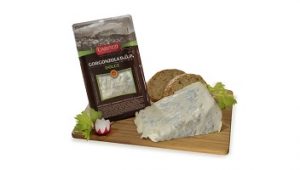
The producers of Dolce Verde Gorgonzola, very often, enjoy in giving names like “infernale” (hell) or “diabolico” (evil), to enhance the special quality of their Dolce Verde Gorgonzola.
The DeCo designation given to Gorgonzola cheese, also turns out to be very controversial, and the Consortium has requested an opinion in place to ascertain the violation of the law, this simply because you can not use the term “Gorgonzola“, to indicate any blue cheese, in comparison, it is like using the word “Champagne“, to indicate any sparkling wine made with traditional methods, other than an AOC Champagne.
Uses in the kitchen
The Dolce Verde is highly appreciated in the kitchen, especially savored smooth with bread, it is a key ingredient for the preparation of many dishes of the Lombard cusine, and in Piedmont for the risotto with scallops, and is very often supplemented with other less spicy cheese but equally substantial. It is the main ingredient and the one that best enhances the flavors for the preparation both of pasta with four cheeses, than in the version alla bava which also includes the addition of rice. The other cheeses, vary greatly depending on the region, but certainly one of these is the Parmesan cheese, or the Grana or the Lodigiano, always grated.
The other two remaining cheeses are almost always sweet and melting dairy products, such as Valtellina and Fontina cheese, but even if the Italian Emmentaler. Even nuts and Mascarpone, are often combined with Dolce Verde Gorgonzola raw.

